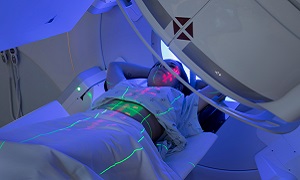Best Doctors in India for Osteosarcoma Treatment
Best Hospitals in India for Osteosarcoma Treatment
- City: Bengaluru, India
Hospital Highlights:
- Fortis Hospital Bannerghatta, Bengaluru was established in 2006.
- The hospital is a 276 bedded multi-specialty tertiary care facility.
- The hospital specializes in cutting-edge medical technology and dedicated patient care services.
- The hospital is equipped with state-of-the-art technologies like trans-radial angioplasty, trans-abdominal cardiac surgery, and computerized TKR navigation surgery.
- The hospital provides specialty medical services in cardiology, cardiac surgery, orthopedics, neurology, neuro-surgery, GI, and Minimal Access Surgery (MAS).
- City: Chennai, India
Hospital Highlights:
- Fortis Malar was established in 1992 and was formerly known as Malar Hospital.
- The hospital specializes in cutting-edge medical technology and dedicated patient care services.
- The hospital is multi-specialty, tertiary care facility with 180 beds.
- The hospital offers comprehensive medical care in specialties such as cardiology, cardio-thoracic surgery, neurology, neurosurgery, orthopedics, nephrology, gynecology, gastroenterology, urology, pediatrics, and diabetes.
- City: New Delhi, India
Hospital Highlights:
- Established in 1996, Pushpawati Singhania Research Institute is one of the top hospitals in the NCR region, as well as one of the top facilities in India for gastroenterology. The hospital is one of South Asia’s first institutes in medical and surgical treatment for diseases related to digestion.
- The hospital is equipped with state-of-the art facilities coupled with the latest equipment as well as renowned consultants from various parts of India as well as other parts of the world.
- City: New Delhi, India
Hospital Highlights:
- State-of-the-art technology and devoted healthcare professionals have been brought together under one roof at Venkateshwar Hospital to provide genuine medical care. The hospital’s professionals work together as a team to deliver the best possible treatment to their patients, using the most sophisticated equipment and information technology.
- Venkateshwar Hospital’s mission is to attain global excellence in healthcare by employing evidence-based, ethical clinical practices and cutting-edge technology by a team of highly skilled experts.
- City: New Delhi, India
Hospital Highlights:
- Sir Ganga Ram Hospital, New Delhi is known to provide the latest medical procedures with the latest technology in all of its units.
- The hospital has a team of reputed doctors, nurses, and healthcare professionals that ensure that patients receive quality care at affordable costs.
- Staffed with a team of highly qualified doctors, dedicated nurses, and paramedical and non-medical staff, the hospital aims to lead in healthcare delivery, medical education, training, and research.
- As per the vision of the founder, the hospital also provides free treatment to the economically weaker sections of society.
- Sir Ganga Ram Hospital also provides training to young doctors under the Diplomate in National Board(DNB) program. The DNB program at the hospital was started in 1984 and it is known for currently running the maximum number of DNB specialties in the country. It also has the distinction of having the first bone bank in India.
- City: Kerala, India
Hospital Highlights:
- Established in 2019, Apollo Adlux Hospital is the first Apollo Hospital in Kerala and the 73rd hospital owned by Apollo Group in India. With the state’s most advanced, comprehensive healthcare infrastructure and cutting-edge technologies, Apollo Adlux Hospital stands as an example of medical excellence in Kerala.
- With over 34 multi-specialty departments, the hospital believes in providing the best quality treatment to its patients at affordable rates, ensuring comfort at their difficult times.
- The 300-bed hospital is managed by a team of highly qualified and experienced experts who delivers exceptional hospitality to their patients and treats them with great compassion.
- With its affiliation with the Apollo Hospitals Group, the hospital aims in providing patients with top-notch healthcare services while also serving communities in Kerala.
- The hospital has good railway and road connections, and is conveniently close to Cochin International Airport.
- City: Gurugram, India
Hospital Highlights:
- Situated near DLF Cyber City, Gurugram, Narayana Superspecialty Hospital is one of the top medical facilities in the Delhi NCR region, catering to the needs of the people. Known for its commitment to quality medical care and patient service, the hospital is a state-of-the-art facility with planned and well-equipped sections, which includes a spacious OPD area as well as comfortable patient rooms.
- It is the closest super-specialty hospital from Indira Gandhi International Airport towards Gurugram, and also the nearest super specialty hospital from DLF Cyber City. It is also close to major residential areas in Gurugram.
- It is part of the renowned Narayana Health Group. Established in 2000, by Dr. Devi Shetty, a renowned cardiac surgeon, it has grown to be one fo India’s leading healthcare groups.
- City: Noida, India
Hospital Highlights:
- Fortis Hospital, Noida, stands as one of the oldest and most trusted healthcare institutions in the region, setting a benchmark for comprehensive medical care.
- As the second mega hub hospital in the Fortis Healthcare Group, Fortis Hospital, Noida, upholds a legacy of trust among more than 1.2 million patients. By integrating top-tier professionals with cutting-edge technology, the hospital delivers superior treatment across various medical disciplines.
- Specializing in advanced Neurosciences, Orthopedics, Kidney and Liver Transplant Programmes, Fortis Hospital, Noida has successfully performed over 1,500 transplants, solidifying its reputation as a leader in specialized medical interventions.
Osteosarcoma
Osteosarcoma, which is also termed as osteogenic sarcoma, is a type of bone cancer. It occurs when the cells that grow new bone form a cancerous tumor. If the disease is diagnosed early, then treatment procedures such as surgery or chemotherapy are successfully able to remove the tumor, before it can spread.
However, after the treatment is complete, lifelong monitoring is important to avoid any late side effects.
Anyone can have osteosarcoma, but it is generally the most common kind of bone cancer prevalent among children and teenagers. It occurs mostly among teenage boys.
Symptoms
Some of the signs and symptoms of the condition can include any of the following:
- Swelling or lumps around the bones or the ends of bones
- Pain at night
- Pain after exercise
- Bone or joint pain or soreness. This pain may come and go for months.
- Broken bones without a clear reason
- Limping
Although some limb pain and swelling are common among active and growing children, it is best to talk to your doctor if these signs do not go away in a couple of weeks, or if they worsen.
Causes & risk factors
What exactly causes osteosarcoma is not known. Doctors know this cancer forms when something goes wrong in one of the cells, that are responsible for making the new bone.
The condition generally begins when a healthy bone cell develops significant changes in its DNA. A cell’s DNA contains all the instructions telling it what to do. These changes tell the cell to start making new bone when it is not required. This results in a mass or a tumor of poorly formed bone cells that might invade and cause damage to healthy body tissue.
Some of these factors are known to increase the risk of osteosarcoma:
- Having undergone treatment previously with radiation therapy
- Other bone disorders, such as fibrous dysplasia or pagel’s disease
- Certain inherited or genetic conditions
Diagnosis
A medical history and a physical exam
Imaging Tests
Biopsy
Treatment
Treatment is going to depend on several factors, including the tumor’s location, how fast it’s growing, and whether it has spread. Your age and overall health is also considered.
Treatment is the most effective when you start it before the cancer has spread beyond your bones to any other tissues or organs. People are generally able to find tumors early since they cause pain, swelling or a limp. It is best to let your doctor know about warning signs like these so that you can start treatment early.
Most people who are having osteosarcoma require surgery along with chemotherapy. Some also choose to get radiation therapy.
Surgery
Limb-sparing surgery
Amputation
Rotationplasty
Chemotherapy
This treatment method involves using strong drugs to kill the cancer cells as well as to stop their further growth. They are usually administered into your vein through an IV.
Doctors treat most osteosarcomas with chemotherapy. The drugs help to shrink the tumor, which can help to make surgery easier, if it is required later. They are also able to get rid of small clusters of cancer cells that doctors might not see during medical scans.
Side effects generally include nausea and vomiting, diarrhea, along with a loss of appetite. Children generally have less severe side effects from this treatment as compared to adults, so they might receive higher doses of medication.
Radiation therapy
In this method, high-energy X-rays are used to kill cancer cells.
Radiation doesn’t work as effectively on osteosarcoma cells as compared to other cancers.
However, your doctor might choose to use a procedure known as external beam radiation therapy if they are unable to remove all of the cancer through other methods.
Complications
Complications of osteosarcoma as well as its treatments can lead to the following side effects:
- Cancer that spreads- Osteosarcoma can spread from where the area where it started to other areas of the body, which makes treatment and recovery even more difficult. Osteosarcoma that spreads is mostly known to spread to the lungs and other bones.
- Adapting to limb amputation- Surgery that removes the tumor and spares the limb is used whenever it is possible. However, it might be necessary to remove part of the affected limb to remove the cancer. In such cases, an artificial limb or prosthesis will be required but it requires time, practice and patience.
- Long-term treatment side effects- The aggressive chemotherapy which is required to control osteosarcoma can lead to substantial side effects, in the short term as well as in the long term. Your health care team can help you manage the side effects that occur during the treatment and provide you with a list of side effects to watch for in the years following your treatment.













